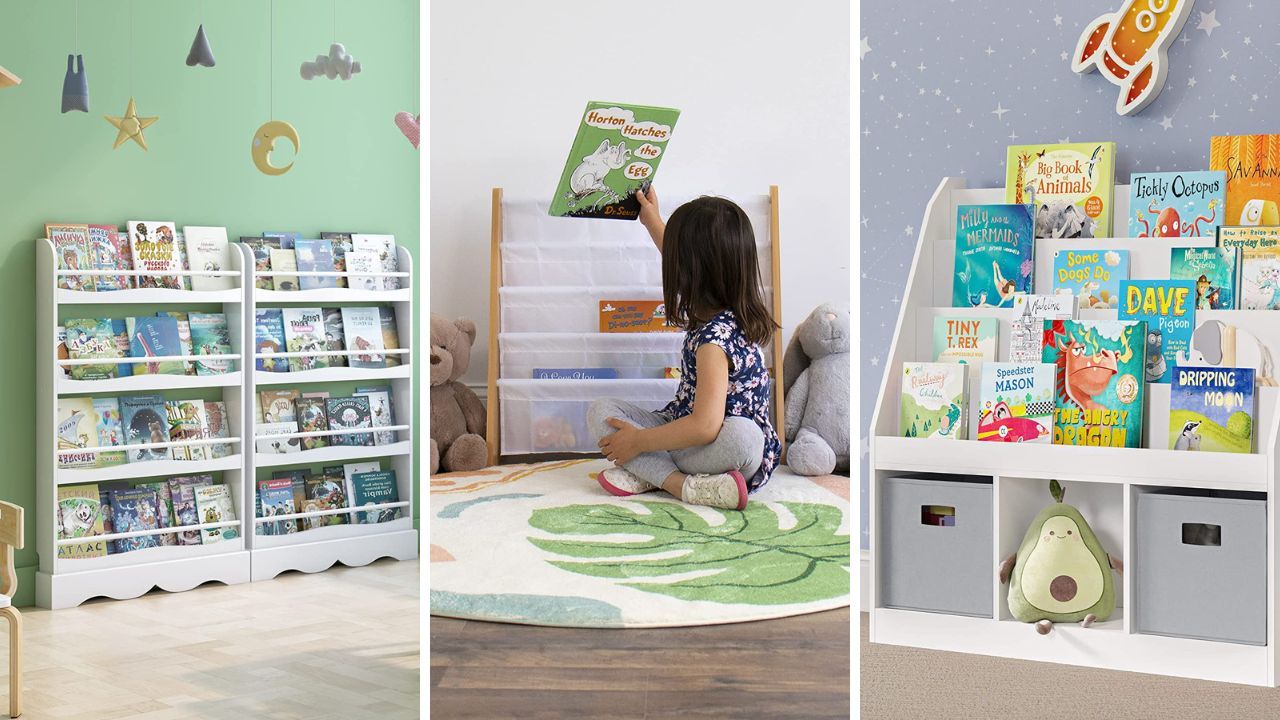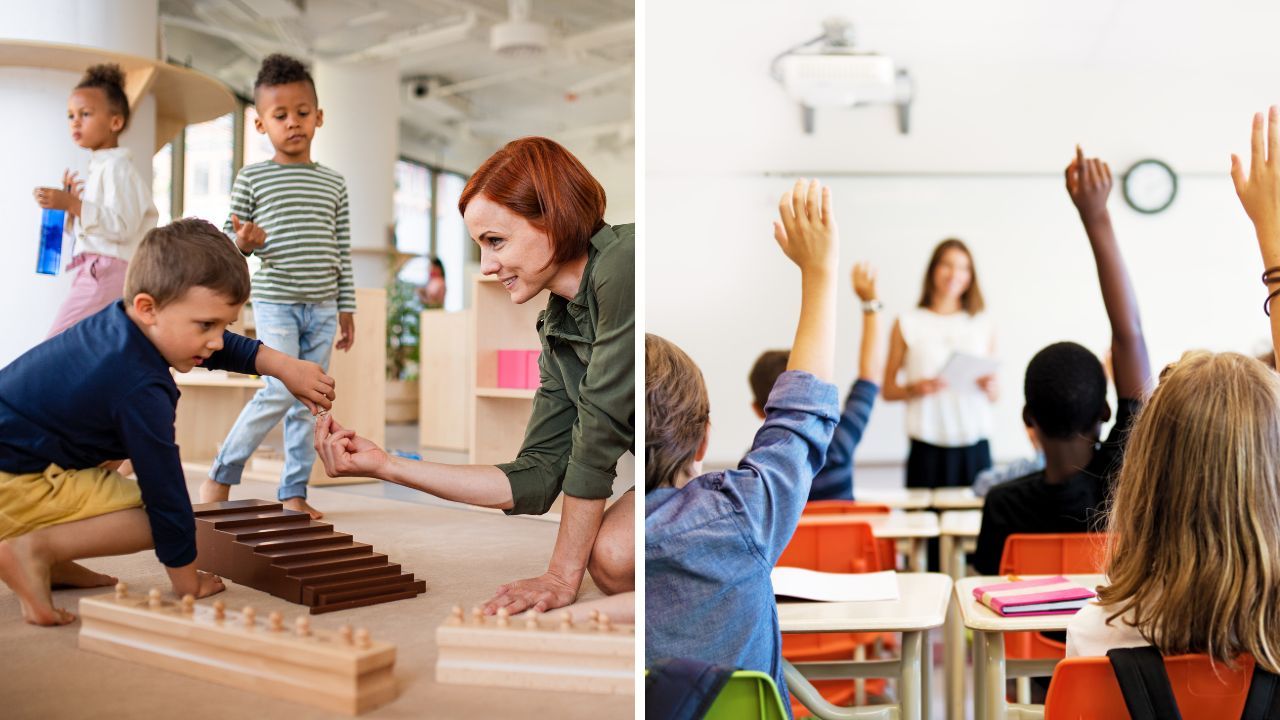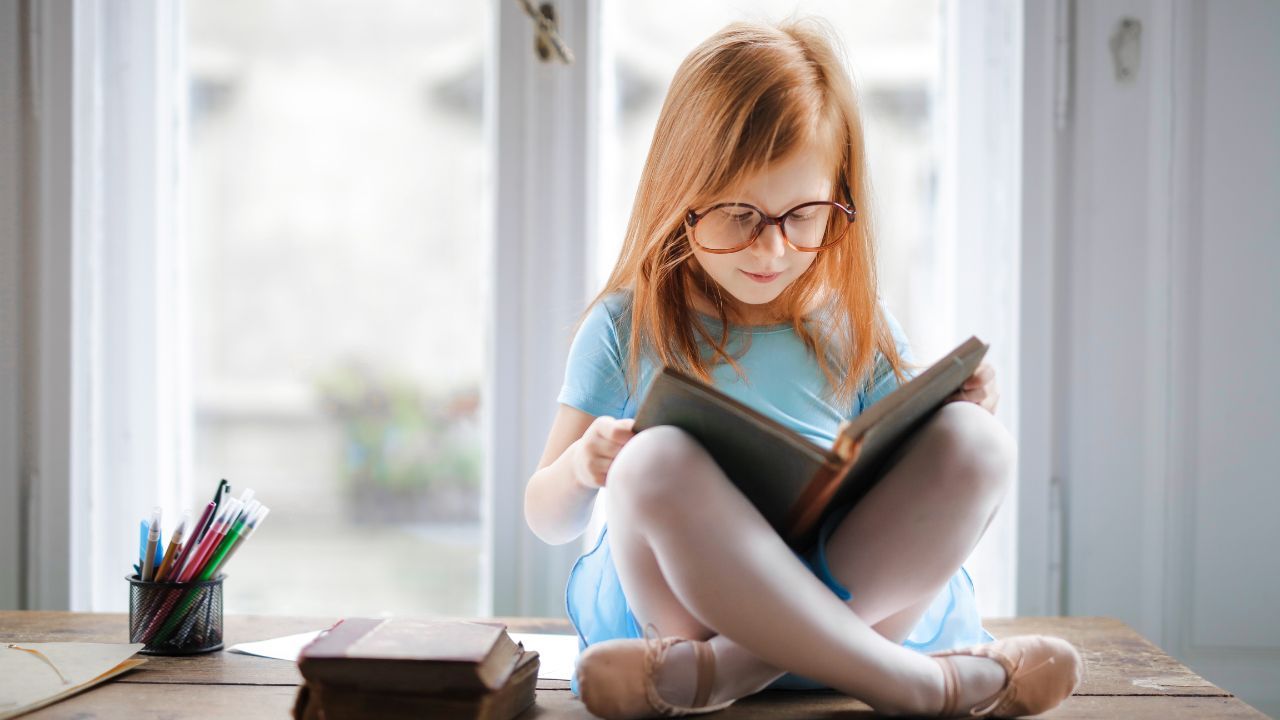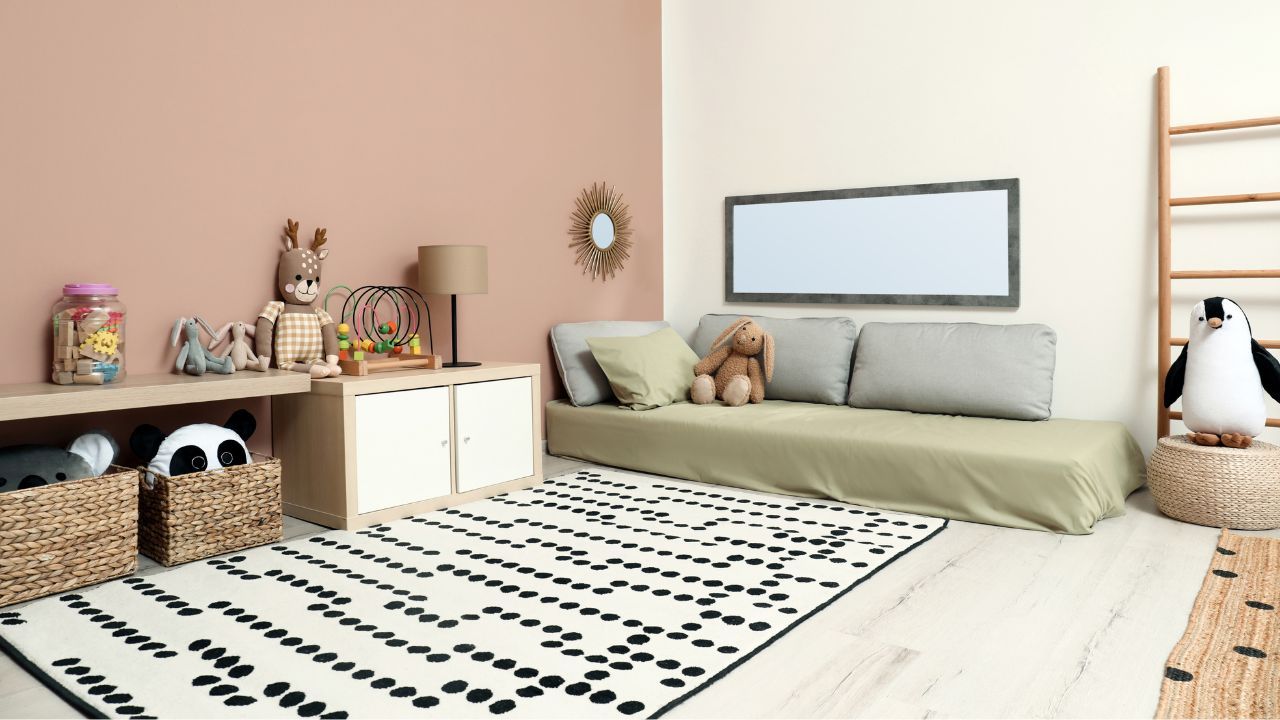
How to Have a Montessori Home: Foster Intellectual Growth
Unleash your child's potential! Learn 'How to Have a Montessori Home' and let them thrive in a fun, educational environment.
What does it mean to have a Montessori home? Imagine a home where your child feels empowered, independent, and capable. That's what a Montessori home is all about!
It's not about expensive toys or rigorous schedules. Instead, it's about creating an environment that fosters your child's natural curiosity, encourages exploration, and promotes a love of learning. It's about giving them the freedom to learn at their own pace and in their way.
Why is having a Montessori home important? A Montessori home can play a significant role in your child's development.
It helps cultivate lifelong skills like problem-solving, critical thinking, and self-discipline. It also nurtures their sense of responsibility and respect for their surroundings.
In short, a Montessori home sets up your child for success, not just academically, but in life.
Understanding the Montessori Method
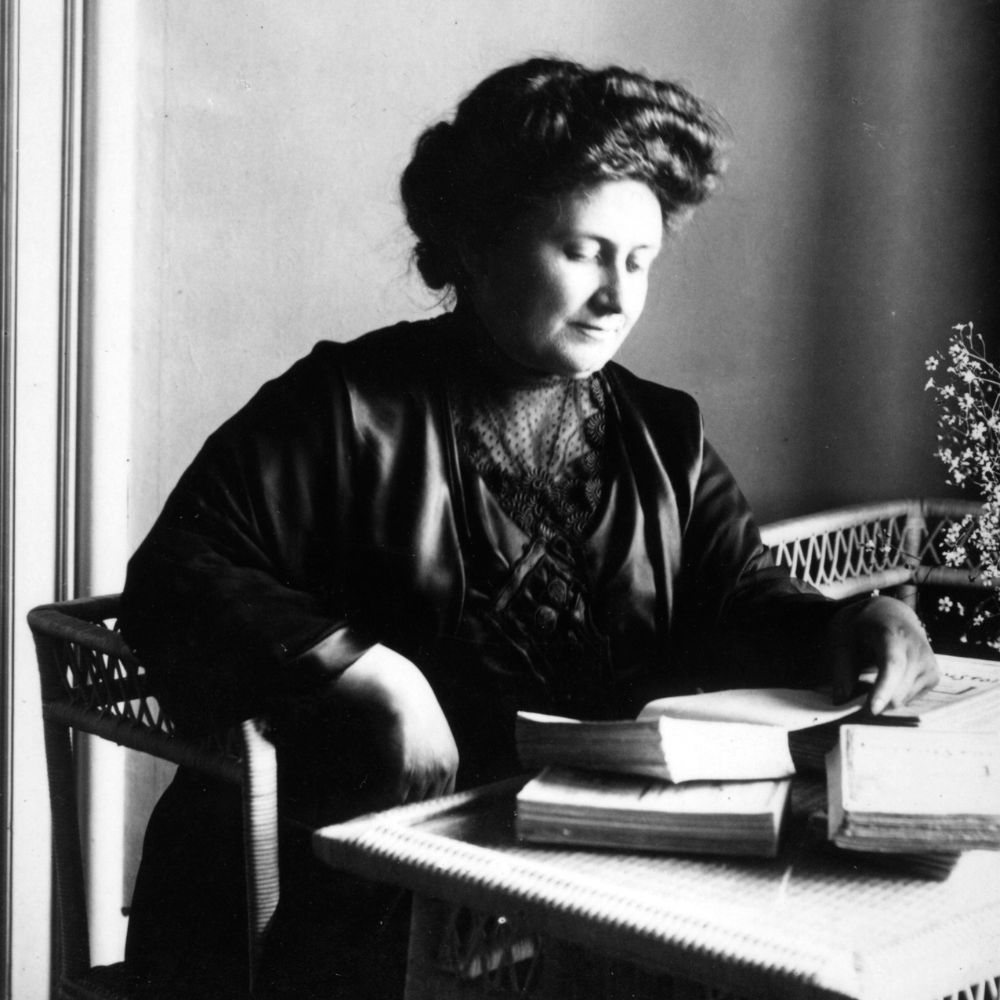
The Montessori Method was developed by Dr. Maria Montessori, an Italian physician and educator, in the early 20th century. She believed that children learn best when they're active participants in their education.
The method is rooted in respect for the child's natural curiosity and desire to learn. It emphasizes independence, freedom within limits, and a sense of order. The goal is to help children develop physically, socially, emotionally, and cognitively.
Benefits of Montessori at Home
The Montessori method home environment has several noteworthy benefits, as it encourages children to be independent, self-motivated, and critical thinkers.
It provides a unique approach to learning that can have lasting positive effects on a child's development.
Implementing the Montessori method at home can help your child become more self-reliant, confident, and respectful. It can also foster a deeper parent-child relationship as you guide and support your child's Montessori education.
Here are some key benefits of implementing the Montessori method at home:
- Promotes Independence: Montessori students learn to care for themselves and their environment. They participate in practical tasks such as washing tables, organizing shelves, and preparing meals.
- Offers Opportunities for Self-Correction and Personal Growth: The Montessori environment allows children to learn from their mistakes and grow intellectually and emotionally.
- Develops Key Life Skills: Children develop order, coordination, concentration, and a sense of independence. They enjoy freedom within limits, which fosters responsibility.
- Stimulates Cognitive Development: The Montessori approach to motor development stimulates cognitive development and deep concentration.
- Boosts Practical Life Skills: Montessori education includes practical life activities that develop motor control, coordination, independence, concentration, and a sense of responsibility.
- Recognizes and Develops Inherent Learning Abilities: The Montessori method recognizes and develops your child's inherent ability to learn about the world around them.
- Eliminates Behavior Problems: A Montessori parent can help eliminate behavior problems by allowing children to explore in a safe space.
Incorporating the Montessori method at home (especially with school-aged children) can provide an enriching and empowering learning environment for children, fostering a love for learning that could last a lifetime.
Starting Your Montessori Journey at Home
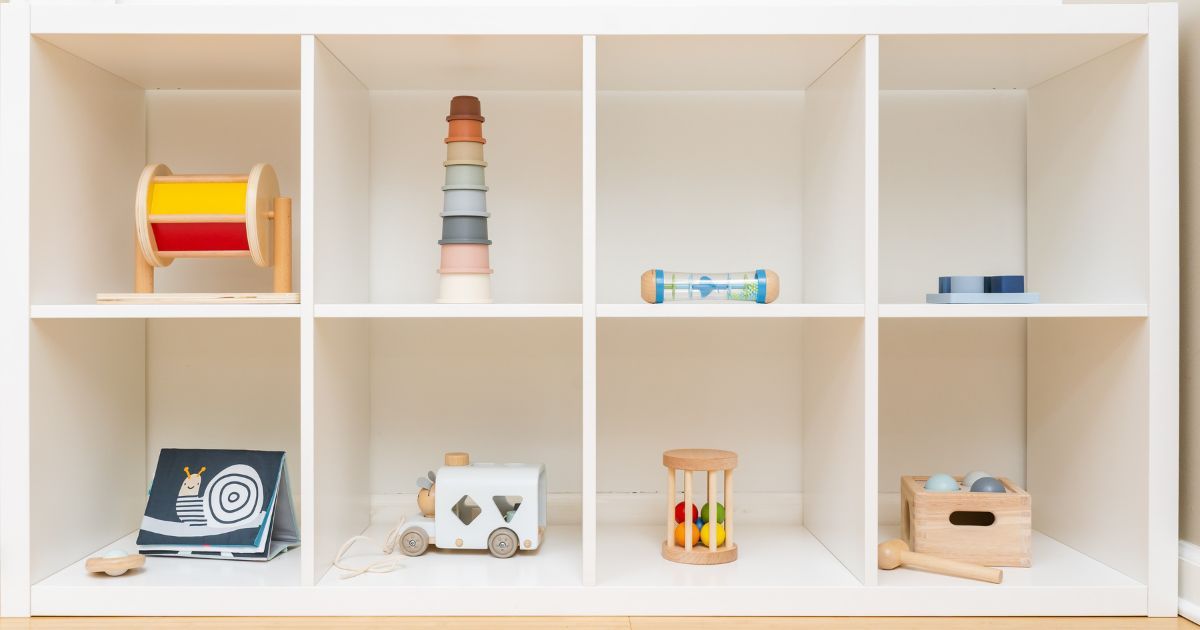
When is the Ideal Age to Start Montessori at Home?
The beauty of the Montessori Method is that it can be introduced at any age. However, starting as early as possible (even from birth) can set the foundation for a lifelong love of learning. Remember, it's never too late to start!
Gradual Steps to Incorporate Montessori Principles
Transitioning to a Montessori home doesn't happen overnight. It's a gradual process that starts with observing your child and understanding their needs and interests.
Then, slowly introduce Montessori-inspired activities that align with your child's developmental stage.
Use these tips to help foster independence and curiosity while respecting your child's pace of development:
- Observation: Pay attention to your child's interests. If they show fascination towards plants, perhaps introduce a botany book or plant seeds together.
- Structure and Order: Create an organized environment where everything has its place. For example, a few books can be kept on a low shelf, and art supplies and blocks in labeled bins.
- Child-Friendly Spaces: Make your home more accessible by having furniture scaled to a child's size. This could include a small table for crafts or low shelves for their clothes.
- Demonstrate and Involve: Show your child how to do things, then let them try. For instance, demonstrate how to fold clothes, then invite them to help next time.
- Incorporate Real-Life Activities: Allow your child to participate in everyday chores like setting the table or watering plants. This promotes hands-on learning.
- Simplify and Rotate Toys: Keep a few sets of toys out at a time and rotate them every few weeks to keep your child's interest. For example, have building blocks one week, and switch to puzzles the next.
Overcoming Common Challenges in Starting Montessori at Home
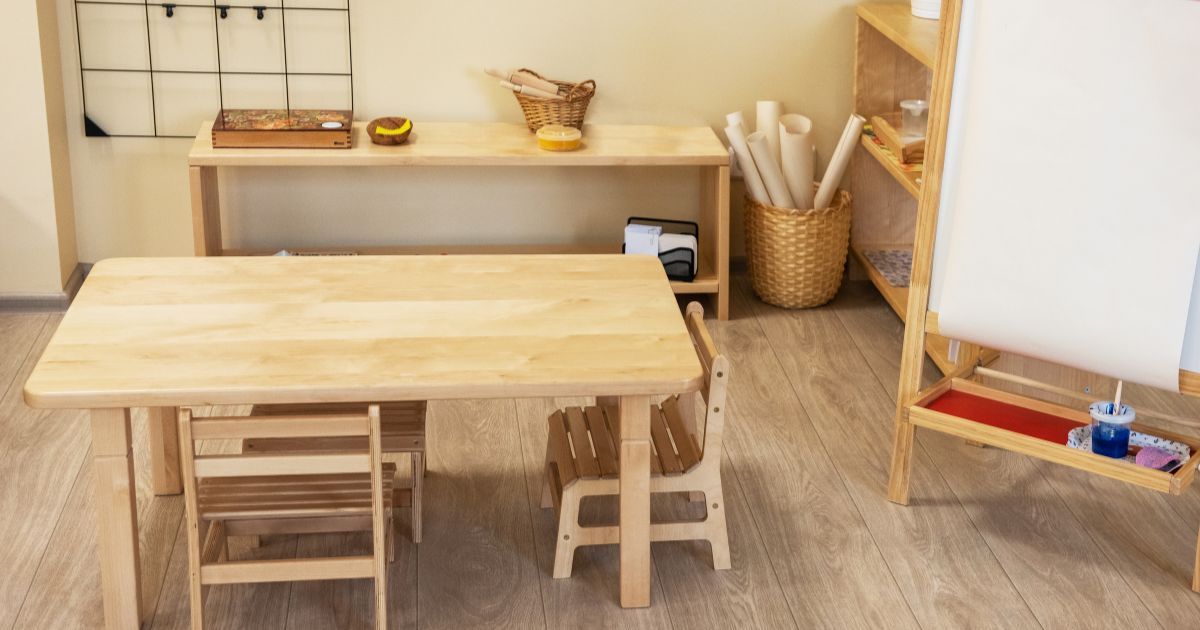
Starting Montessori at home can feel overwhelming. You might worry about doing it "right" or struggle to find the right materials.
But remember, the Montessori Method is about following your child's lead, not achieving perfection.
Here are some common obstacles and how to overcome them:
- Building a Routine: The Montessori method values a consistent routine, which may take some time to establish. Start by setting regular meals and bedtimes, then gradually introduce other activities. A predictable routine can augment your child's sense of security.
- Setting up a Prepared Environment: This involves arranging your home to foster independence and learning. You might start with a low shelf for toys and books or a small table and chair for activities. Over time, you can invest in child-friendly furniture and Montessori materials.
- Managing a Busy Schedule: Balancing Montessori practices with daily life can be tough. Try incorporating Montessori principles into daily tasks, like letting your child help prepare meals, wash tables, and assist younger children. This makes integrating Montessori into a busy lifestyle more achievable.
- Ensuring Consistency: The success of the Montessori philosophy hinges on its consistent application. If rules change frequently, it can confuse the child. Maintain consistency by setting clear expectations and following through.
- Addressing Attention Challenges: The Montessori approach requires concentration. For children with attention difficulties, this could be challenging. However, using engaging, hands-on Montessori activities can help sustain their interest.
- Switching to Traditional Education: If a child moves from a Montessori classroom to a traditional classroom, they might struggle due to differences in pedagogical methods. To ease the transition, gradually introduce elements of traditional education, like structured lessons and tests.
Remember, every family is different and what works for one may not work for another. Patience, flexibility, and creativity will go a long way in making your Montessori journey successful.
Creating a Montessori-friendly Environment
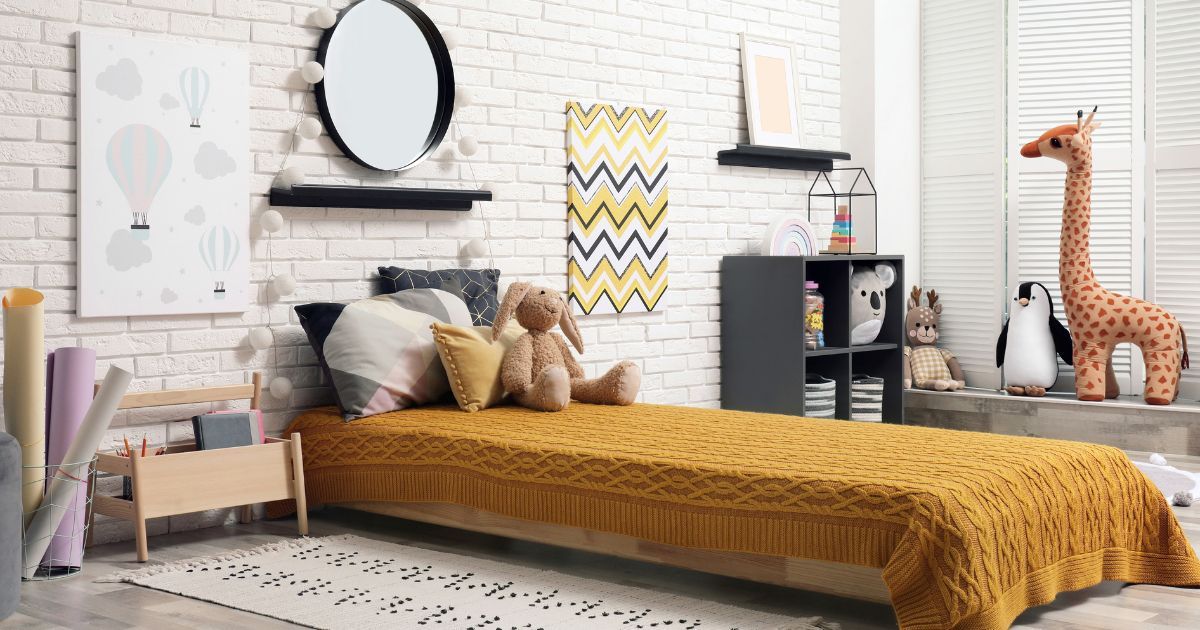
Designing a Montessori-inspired home environment is the perfect complement to your child's education, fostering an optimal learning experience.
Baby-proofing Your Home: Safety as the Priority
In a Montessori home, safety is paramount. Start by baby-proofing your home to prevent accidents.
This includes securing furniture to the wall, covering electrical outlets, installing safety gates, and removing choking hazards.
Remember, a safe environment gives your child the freedom to explore without constant adult intervention.
Child-friendly Bedrooms: The Importance of Autonomy
A child's bedroom should encourage autonomy and independence.
Keep toys and books on low shelves and use open storage so your child can easily access their belongings. This fosters decision-making skills and promotes a sense of ownership.
Utilizing Child-sized Furniture: Promoting Independence
Child-sized furniture is a staple in a Montessori home. It enables your child to do things independently, boosting their confidence and self-reliance.
For instance, using a small table and chairs for meals or activities means your child can sit down and get up without help. They can also reach materials without always asking for assistance, encouraging independence.
Having a Child-friendly Shelf or Cabinet in the Kitchen: Encouraging Participation
Including your child in daily household chores like cooking not only teaches them life skills but also makes them feel valued and competent.
Clear out a lower shelf or cabinet in your kitchen for your child's dishes and utensils. This way, they can set their place at the table or help with simple food prep tasks.
Montessori at Home for Infants
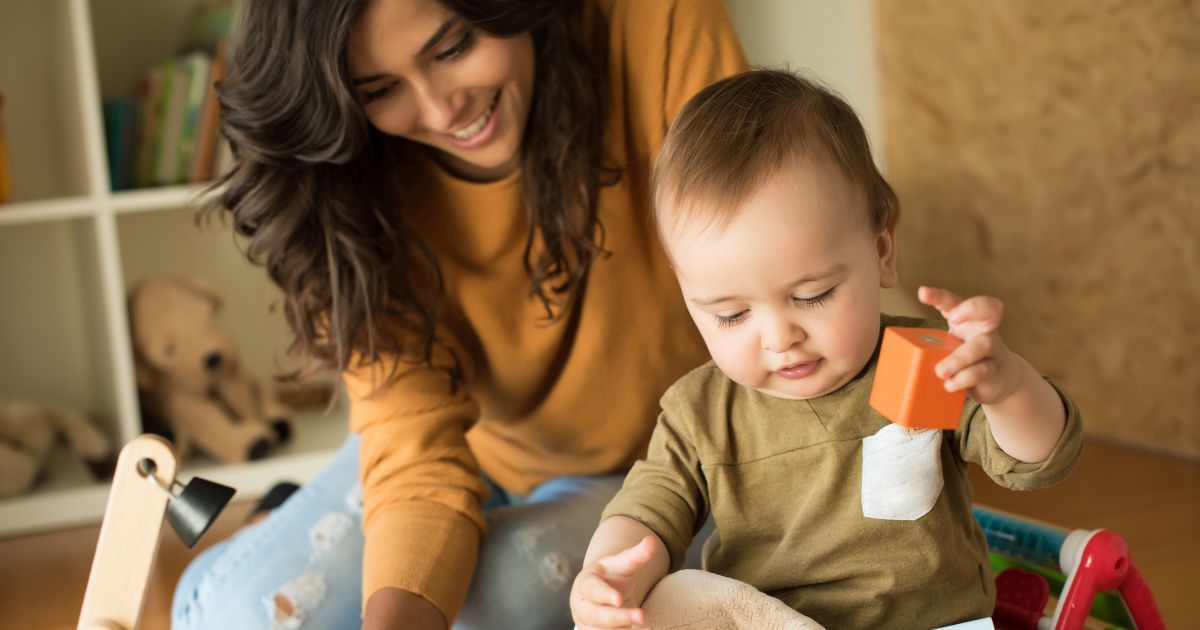
Montessori principles can be applied right from birth, creating a nurturing, stimulating environment that fosters your infant's natural curiosity and desire to learn. Here's how you can implement Montessori at home for your little one.
Creating a Montessori-friendly Environment for Infants
A Montessori baby environment is safe, calming, and designed around the baby, not the parents.
The room should provide ample open floor space for your baby to move and explore freely.
- Use low shelves and a floor mat to arrange developmentally appropriate toys and activities.
- A stable, low mirror can enhance self-awareness and curiosity.
- Artwork and mobiles should be placed at the baby's eye level to stimulate their visual senses.
In a Montessori nursery, simplicity, natural materials, and order are key.
Choosing Montessori Toys for Infants
When it comes to toys, Montessori principles favor simplicity and functionality.
They're designed to spark curiosity and encourage exploration. For example, one-piece shape puzzles or cylinder puzzles are ideal for babies aged 8 to 14 months.
Montessori Principles for Infants
Montessori parenting emphasizes being attentive and responsive to your baby's needs. This creates a healthy attachment between you and your baby, laying the foundation for lifelong learning.
Montessori also supports natural gross motor development. Instead of propping babies in positions, they can't yet achieve on their own, like sitting or standing,
Montessori encourages letting them learn these skills independently. This approach builds confidence and pride in their achievements.
Incorporating Montessori learning into your home can benefit your infant in numerous ways. It nurtures their curiosity, self-confidence, and intrinsic desire to learn, setting the stage for a lifetime of discovery.
Incorporating Montessori Activities into Daily Life

Montessori encourages teaching practical life skills. These can be as simple as dressing themselves, helping to prepare meals, or cleaning up after playtime.
These tasks foster independence, coordination, and a sense of responsibility.
For example, you might teach your child to pour water from a small pitcher into a cup or to wipe up spills with a towel.
Organizing Toys and Books: Encouraging Order and Self-motivation
Keeping toys and books organized helps children make decisions and take responsibility for their environment.
- Use open shelves instead of large toy boxes.
- Group similar toys together and limit the number of toys available at one time.
This reduces overwhelm and encourages your child to fully engage with each activity.
Clearing Out a Lower Cabinet or Shelf for Storing Kids' Belongings: Fostering Responsibility
Designate a place for your child's belongings. This could be a lower cabinet, a shelf, or a basket.
Remember, creating a Montessori home is a journey, not a destination. Take it one step at a time and enjoy the process!
Beyond the Classroom: Applying Montessori Principles to Everyday Life
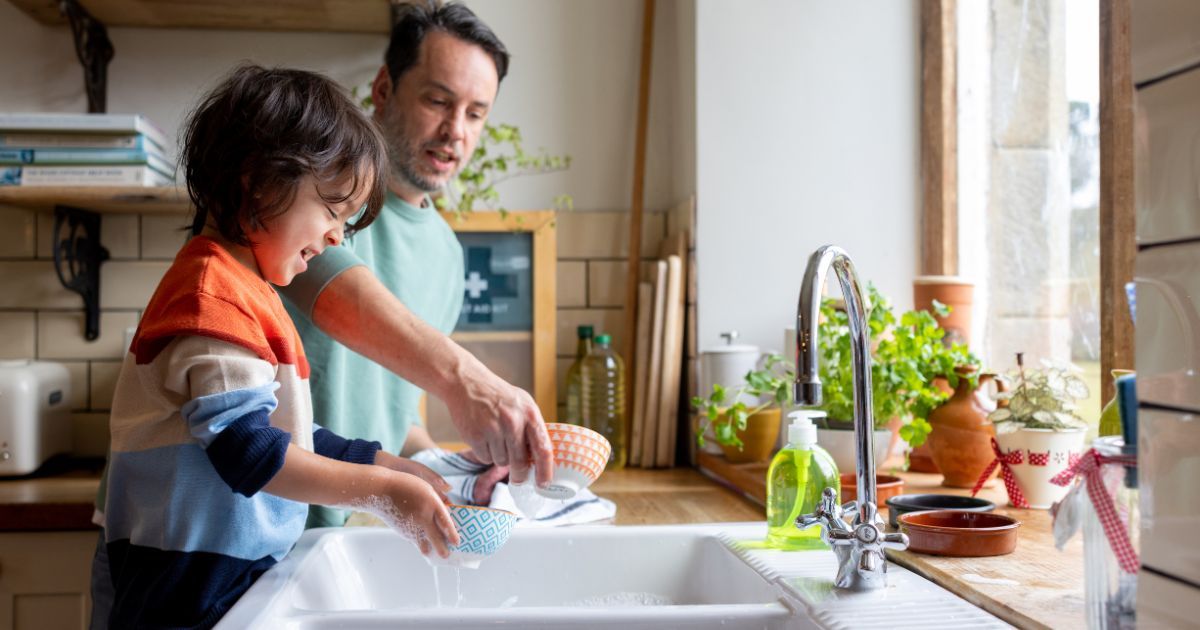
In a Montessori home, everyday items become learning tools.
This hands-on exploration fosters curiosity and helps children understand their world.
Fostering Independence and Self-motivation
Promoting independence doesn't mean leaving your child to fend for themselves. It's about providing the right tools and guidance, then stepping back to let them figure things out.
This could be as simple as allowing your child to choose their clothes or encouraging them to prepare healthy snacks. These small victories build confidence and self-motivation.
Designing Activities that Promote Learning Through Play
Montessori activities are designed to be engaging and educational. They often involve real-life tasks that promote practical skills.
Remember, the goal is not to rush towards a correct result, but to learn through the process.
Frequently Asked Questions
Parents often ponder whether they require specialized training or costly materials to establish a Montessori home. The simple answer is no.
The essence of the Montessori method lies in the approach rather than the materials. It entails honoring your child's uniqueness and nurturing their journey toward independence.
Here, we address some common queries you may have about Montessori education.
What are the benefits of Montessori parenting?
Montessori parenting cultivates a child's independence, fosters a love for learning, and promotes respectful communication.
It encourages the development of practical life skills and cognitive growth while teaching respect for oneself, others, and the environment.
By focusing on real-world experiences and providing consistent, logical limits, Montessori parenting can facilitate a child's holistic development and well-being.
What are the disadvantages of Montessori?
While Montessori education fosters independence and self-guided learning, it can be costly and quality implementation varies from one Montessori school to another.
The child-led curriculum may not suit all children, and the availability of authentic Montessori schools is limited.
Additionally, the transition to conventional schools can be challenging due to the different teaching approaches.
What is the best age to start Montessori at home?
The Montessori method can be introduced from birth, but structured activities are often most effective during the toddler years (18 months to 3 years). This approach should be tailored to your child's individual needs and pace.
What is the Montessori method at home?
The Montessori method at home is an educational approach that fosters independence and self-motivation in children through a child-led, hands-on learning environment.
It involves simplifying supplies, rotating toys, engaging with thought-provoking questions, and providing child-scaled furniture and open shelving for materials.
What is the 5 Montessori method?
The Montessori method is grounded in five key principles.
- Respect for the Child emphasizes valuing children as unique individuals.
- The Absorbent Mind refers to a child's ability to effortlessly assimilate information from their surroundings.
- Sensitive Periods are developmental stages when children are especially open to learning certain skills.
- The Prepared Environment involves creating a space that promotes exploration and independence, with child-sized furniture and divAuto education.
- Auto Education encourages self-directed learning, with teachers serving as guides.
How can parents support Montessori at home?
- Observe Your Child: Monitor your child's interests and introduce new materials that align with their evolving interests.
- Organization: Ensure everything has its place and help your child understand where items belong. Sorting items by categories in trays or baskets can be helpful.
- Scaled Furniture: Provide child-sized furniture and low-open shelving units for materials.
- Model, Invite & Practice: Show your child how to do things, invite them to try, and allow them to practice.
- Engage in Daily Life: Include your child in daily activities and provide hands-on learning opportunities.
- Simplify and Rotate Toys: Keep your supplies simple and rotate toys to maintain your child's interest.
Final Thoughts
Creating a Montessori home is an investment in your child's future. It's about fostering a love for learning, promoting independence, and nurturing their natural curiosity.
While it may seem daunting at first, remember that every small step counts. Your journey towards a Montessori home starts with understanding and embracing these principles, and we hope this guide has provided you with a good starting point.
For those interested in diving deeper into the Montessori method, we recommend "The Montessori Toddler" by Simone Davies and "Montessori from the Start" by Paula Polk Lillard. These books provide valuable insights and practical tips for implementing Montessori principles at home.
Remember, the Montessori journey is unique for every family. Embrace it at your own pace and watch as your child blossoms into a confident, independent learner.
Before You Go...
